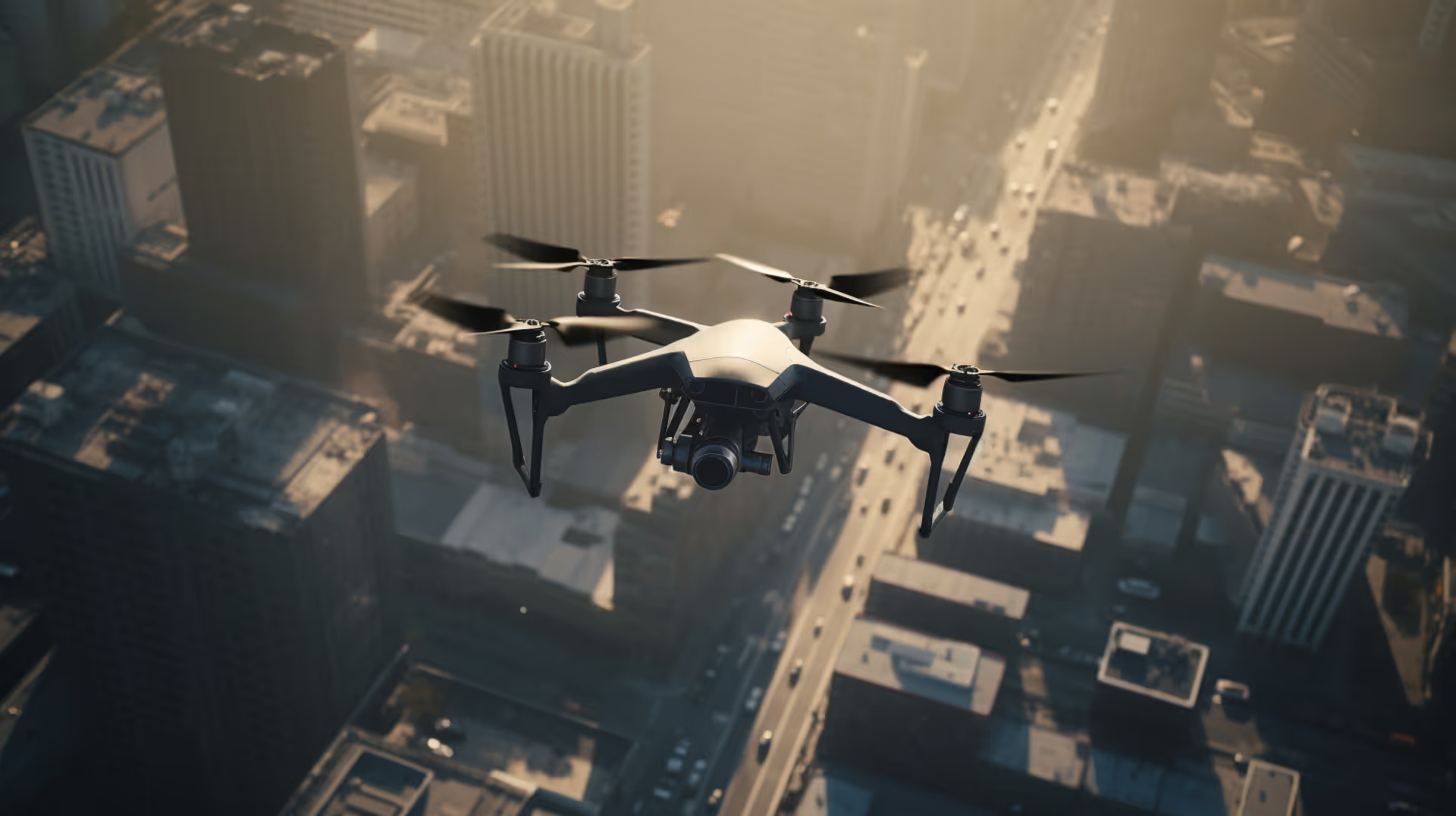Download the full whitepaper
Executive summary
Mitigating the threat of easily available commercial uncrewed aerial systems (UAS) currently requires expensive radar or camera systems, detailed knowledge of the UAS C2 protocol or cooperative telemetry. Bulky, fixed installations can be highly effective, but struggle to deliver results for mobile personnel, especially when seeking to remain inconspicuous.
TTP has developed a proof-of-concept pocket-sized passive RF drone detector that addresses this need. Our system combines low-cost RF hardware with low-power Edge AI for detection. With the model trained to detect the characteristics of UAS RF emissions, it has the potential to detect uncooperative and previously unseen drones. Unlike other AI-powered solutions, our lightweight models can run on the processing power found in a mobile phone, and can be imagined as a mass-produced solution for routine security or defence scenarios.
Leveraging an extensive pre-training step and a synthetic data generation pipeline significantly reduces the need for large-scale data collection & labelling activities, overcoming the common scalability issues of ML powered systems. When issued to personnel or used to protect critical infrastructure, the device provides increased situational awareness and robust detection performance in complex, noisy environments.
Read the full whitepaper to learn more. If you are interested in further developing TTP’s concept into a deployable system, or exploring the possibilities of low-cost SIGINT systems please get in touch.
TTP's handheld drone detection concept FAQs
What makes detecting non-cooperative drones difficult?
Non-cooperative drones are those that do not broadcast identifying signals such as Remote ID, or actively disable/spoof them. Detecting them requires sensing unintended or passive emissions, such as RF control links, rather than relying on pre-programmed telemetry. This is challenging because signals can be weak, masked by background noise, and vary between drone types.
How does TTP’s passive RF drone detector work?
TTP’s concept uses low-cost RF hardware combined with edge machine learning to detect the unique RF signatures emitted by drones. By analysing a wide spectrum of radio frequencies with lightweight convolutional neural networks (CNNs), the device can identify drone activity even in noisy urban environments. Unlike traditional radar or optical systems, it is compact, battery-powered, and operates silently without emitting signals of its own.
Why is edge AI important for handheld UAS detection devices?
Edge AI allows machine learning models to run directly on the low-power hardware, without relying on cloud connectivity. This enables real-time infrastructure free detection in the field, reduces latency, and keeps the device discreet and RF-silent, critical for both tactical and civilian security operations.
How does synthetic data improve drone detection models?
Synthetic data generation creates realistic training datasets by simulating drone communication signals across diverse environments. This reduces the need for costly real-world data collection and labelling, while ensuring models stay up to date with evolving drone technologies. It also improves scalability, making it easier to train models that can recognise new or unseen drones.
What makes this solution different from radar or camera-based drone detection?
Radar and camera systems are effective but often large, costly, and conspicuous. They also require line-of-sight and may struggle in complex urban environments. TTP’s passive RF approach offers a pocket-sized, low-cost alternative that does not rely on cooperative signals or expensive infrastructure, making it better suited for mobile personnel and discreet deployments.
Can the system detect previously unseen or custom-built drones?
Yes. Because the models learn the underlying features of UAS RF emissions rather than relying only on matching the received signal to known protocols in a database, the system has the potential to detect drones it has never encountered before. This adaptability is a major advantage compared with traditional demodulation-based systems, which are limited to recognising only pre-programmed signals in narrow frequency bands.
Who can benefit from pocket-sized drone detection technology?
The technology is relevant for defence and security forces, critical infrastructure operators, law enforcement, event security teams, and private organisations. Tactical users benefit from a lightweight, RF-silent tool for situational awareness, while civilian applications include protecting venues, airports, prisons, and power facilities from unauthorised drone activity.
Can TTP partner with companies to develop deployable drone detection systems?
Yes. As a product and technology development consultancy, TTP works with industry partners to translate proof-of-concept innovations into deployable products. With expertise in RF engineering, edge AI, and product development, we can support partners in tailoring the detector to specific operational needs, integrating it into broader security systems, or scaling it for commercial production.
What makes TTP an ideal partner for companies exploring counter-drone technology?
TTP has over 300 engineers and scientists with deep expertise in RF systems, embedded AI, and productisation. We have delivered advanced communications hardware for organisations such as Inmarsat and Spectra Group, alongside our own Gotonomi UAV SATCOM solutions. With dedicated facilities including an AI lab and anechoic chamber, TTP can accelerate the development of cost-effective, reliable counter-UAS technologies from concept through to market.
Where can I get more information?
Download the whitepaper via the form above, or submit any questions or enquiries via our contact page. Our team will be in touch as soon as possible.










